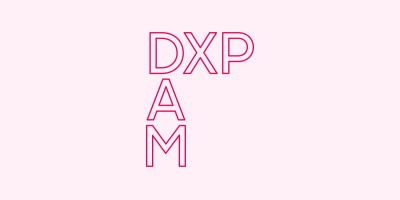Cloud Storage Tools vs. DAM: What’s the Difference?

With more companies working remotely than ever before, dropping by a coworker's desk when you have a question isn’t really an option anymore. As a result, teams are finding themselves rethinking their processes and the tools to help them work at maximum efficiency.
In recent years, brands have turned to cloud storage tools — like Dropbox, SharePoint, and OneDrive — to organize, manage, and share content. While these tools can help companies begin to shape their content management workflow, many find themselves quickly outgrowing the functionality and in need of something more. And these growing pains have never been more apparent than now with more dispersed teams.
That’s where DAM comes in.
Although cloud storage systems and digital asset management (DAM) solutions share some basic functionality, let’s take a closer look at how they differ and how to determine which best aligns with your organization’s needs.
What are cloud storage tools?
Cloud storage tools are digital libraries that allow users to store, share, and sync data via the cloud as opposed to external hard drives or servers. These storage and file-sharing tools include free and paid subscriptions, making them appealing to a wide range of budgets.
When companies begin to struggle with content management, many use cloud storage tools because they’re easy to implement and access. But as teams and content grow, these tools often can't keep pace. Businesses need something with more robust functionality to fully support brand consistency across teams, vendors, channels, and the world.
How is DAM different?
While DAM systems share some base functionality with cloud storage tools, including easy accessibility as a result of being hosted in the cloud, DAM solutions offer many more enhanced features that truly set them apart, including:
Scalability
Teams need a solution that can grow with them. With the security, shareability, and metadata management offered in a DAM solution, businesses can store thousands to hundreds of thousands of assets in their system and still retrieve what they're looking for within a few clicks.
Additionally, integrating your platform with other tools in your technology stack streamlines processes and creates consistency across the content lifecycle. You can even integrate your cloud storage tools with a DAM system as you scale.
Control
Being able to oversee every asset in your system gives organizations the control they need when dealing with content that communicates the value of their brand. With advanced administrative functionality available in a DAM system, a DAM administrator is able to manage what users can view, share, download, and use. Permissioned roles keep access to assets secure, while functionality such as expiration dates, rights management, version control, and metadata work together to support brand management and brand consistency.
Data
Knowing how, why, and where your content is being used is vital for any marketer. With user, system, and asset-level analytics, DAM systems provide insights into logins, downloads, shares, views, location tracking, and more. These data points help marketers understand what’s working and what’s not, and provides them with the analytics needed to optimize their content and ensure they’re getting the most out of it.
User adoption
Any tool is only helpful if people use it. With DAM platforms, elements to assist with user engagement and adoption are built into the tool. Systems can be personalized to reflect a company’s brand with dashboard elements, strategic naming, and branded experiences. Providing users with an on-brand solution builds a stronger bond with the brand and helps extend consistency across all projects and channels.
Compare more DAM solutions features and cloud storage tool capabilities:
|
Features |
Basic cloud storage tools |
DAM solutions |
|
Uploading and downloading files |
Yes |
Yes |
|
Version control |
Limited capabilities |
Yes |
|
Sharing, linking, and distributing options |
Limited capabilities |
Yes |
|
Permissioning capabilities and advanced security structures |
No |
Yes |
|
Update, share, download, and distribute multiple assets at once |
No |
Yes |
|
Unique ID codes for assets |
No |
Yes |
|
Support multiple current and emerging file formats |
Limited capabilities |
Yes |
|
Content lifecycle workflow capabilities |
No |
Yes |
|
Customizable metadata and taxonomy structures |
No |
Yes |
|
Advanced searchability based on metadata |
No |
Yes |
|
Analytics tools measuring content data including engagement, usage, and access location |
No |
Yes |
Which is right for you?
As you can see, cloud storage software and DAM solutions definitely share some basic features — they both provide 24/7 remote access, serve as central repositories, and offer unlimited storage. But DAM solutions go above and beyond being just a content library. They allow organizations to distribute content across channels, automate workflows, and evolve their brand stories with content analytics. Just ask Hootsuite, who rely on their DAM platform to extend the power of their brand.
Although a DAM solution is a larger upfront investment in terms of time and money, the value it can deliver offers a measurable return on investment that teams can rely on as they grow.
Learn more about how our DAM solution, Acquia DAM (Widen), can support operational efficiency at your organization. Request, watch, or click through a demo today.
Note: This article was originally published on Widen.com.


